
Check Out – Part 2 – Part 3 – Part 4
If you have a hot rod, then you know that one thing holds true when it comes to carburetors: One is necessary. Two are better and three really rock! Multiple carburetor setups have been the rage since the beginning of (hot rod) time. The first exciting factory triple carb setup showed up on the J2 Olds (followed shortly by Pontiac). Ford offered several hot “6V” setups too, and it only got better when the Pontiac GTO hit the streets. Chevy really upped the ante with the 400 and 435 horse 427 Corvettes in 1967 (1968 and 1969). Mopar played the game too and they were aggressive with their 440 6-pack and 6-barrel Road Runner/Super Bee setups beginning in 1969 (and following through later with ‘Cuda and Challenger models). Mopar even used the three-deuce setup on their 340 cubic inch AAR Cudas and T/A Challengers.
Of course, tri-power setups were equally common, if not more so in the aftermarket. There were all kinds of them available for everything from flathead Fords to Mopar hemis. Honestly though, most were fitted with pretty weak (as in small CFM) carburetors. Those carbs ranged from Strombers to Rochester’s. The big Holley carbs used on the tri power Corvettes and 440 Mopars were absent, likely because the size made them tough to fit on something compact like a small block Chevy.
But then Holley and sister company Weiand intervened. The folks from Holley recently revealed their small block Chevy three-deuce setup and it’s a knockout. But wait: Why go to a triple deuce setup when EFI is here to stay? Simple. Nostalgia is big today (no secret) and plenty of folks yearn for the simplicity of yesteryear. A lot of enthusiasts can relate to the wail (and the kick you get in the backside) when the end carbs join the party. Besides, the look of a nice three-carb setup always trumps an EFI arrangement – especially those plastic OEM jobs we see on a regular basis.
What Holley and Weiand came up with is a comprehensive tri-power kit. It includes the intake manifold, a trio of carburetors, a set of air cleaners, a complete fuel line setup and a staged linkage package. Basically, it’s a no-hassle system designed to be installed at home in your own shop. Over the next few issues, we’ll dig deep and give you the straight scoop on the hardware, beginning with the intake manifold:
The small block Chevy intake is a mid rise, 180-degree dual plane job cast and machined by Weiand. The magic here is the fact that it was laid out so that it can (a) accept three Holley two barrels with secondary metering blocks; (b) fit the distributor in the stock location; and (c) allow room for both the water neck and heater hose connections. Sure, Holley could have used vacuum secondary carbs on both ends. They could have also used secondary carbs with metering plates instead of metering blocks. That would have saved precious room on the intake, but the Holley and Weiand crew took the hard route and basically packaged everything to fit. Another thing you should know is a big honking HEI body distributor won’t work. You’ll need a standard cap style distributor.
The actual manifold, as mentioned above, is a dual plane example, which is definitely suited to street driving. Intake ports are sized 1.90-inch by 1.15-inch (approximately). Basically, the ports are designed for street use. That’s why Weiand notes that the RPM range is up to 5,500 RPM. When it comes to completely assembled dimensions, the height at the front is 11.5-inches from the front sealing surface to the top of the air cleaner nut. The height at the rear is 12.5-inches from the front sealing surface to the top of the air cleaner nut.
As pointed out, the intake is engineered to accept Holley two-barrel carbs with “v” bowls (that’s the cool cathedral style fuel bowl that was the hot setup in the Sixties). These carbs can have a maximum throttle bore of 1.50-inches. It’s also setup with a heat crossover passage, which obviously helps with drivability. Holley points out that the intake will accept manual choke or electric choke carbs (for the center carb).
The intake will fit all Chevy production line cylinder heads from 1955-1986 along with 1987-91 L98 Corvette style (non-EGR) heads. Obviously, it will work with aftermarket replacement heads mirroring the listed examples (provided they have the same port flange opening and bolt hole locations). Finally, the intake is for non-emissions applications. It will not work with an EGR valve, or hot air chokes or divorced chokes.
Next issue, we’ll dig into the carburetors. For a closer look at the intake manifold, check out the accompanying photos:
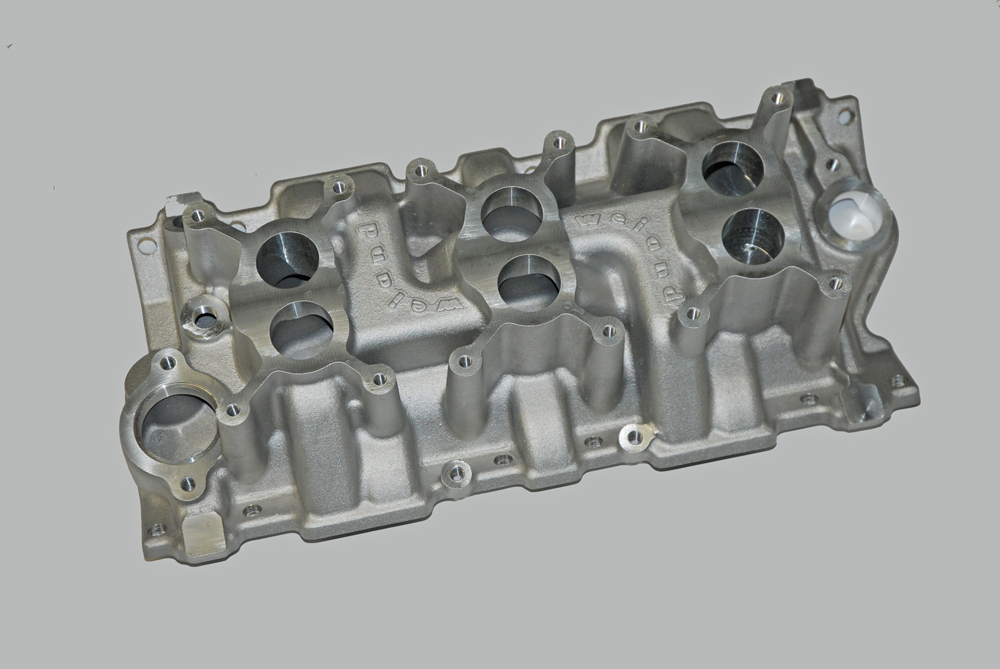
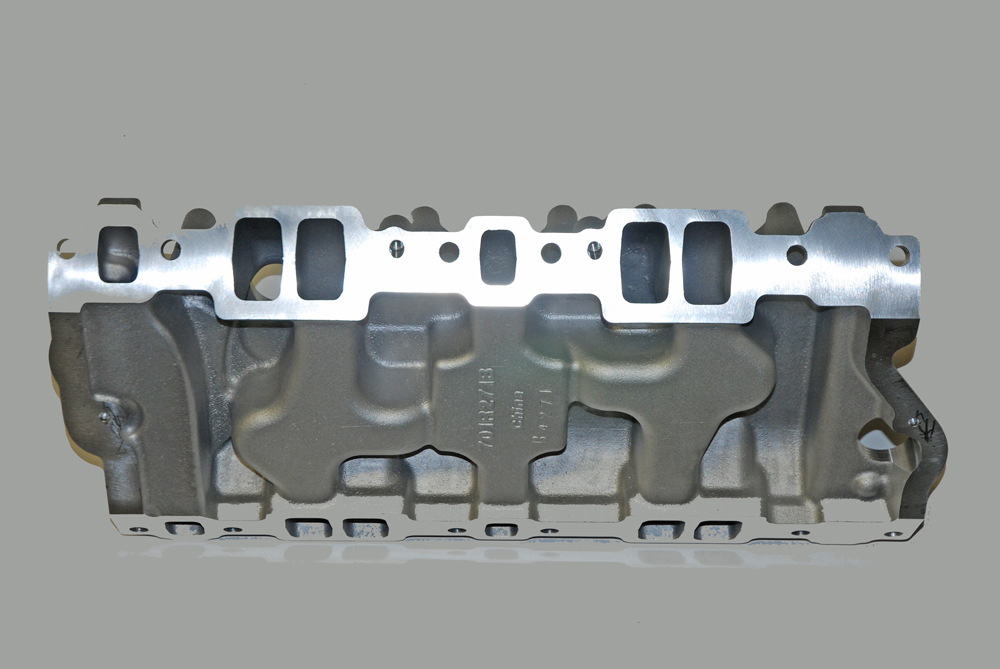
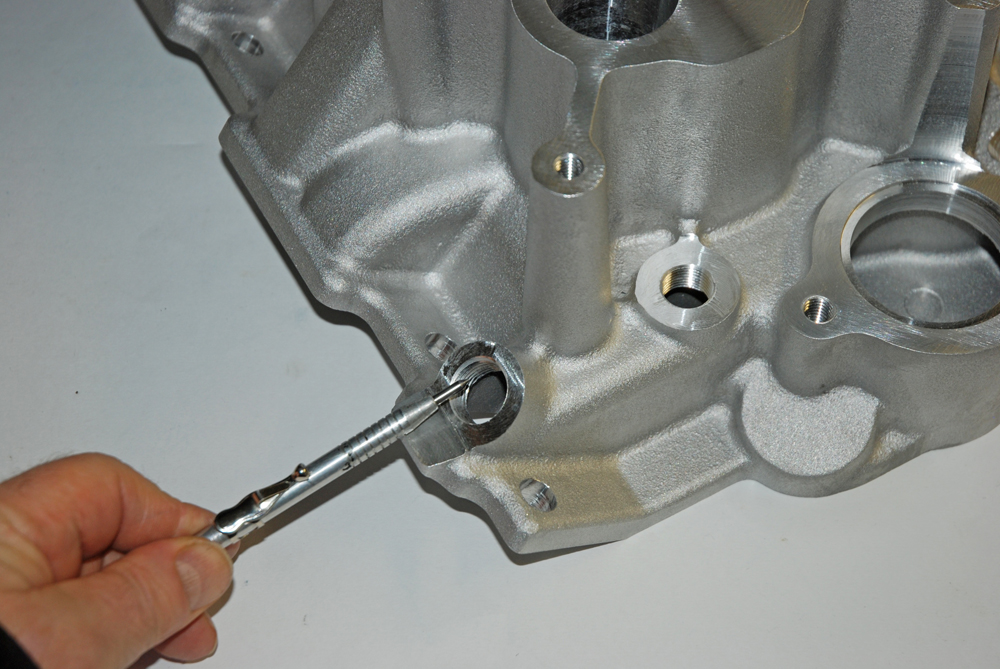
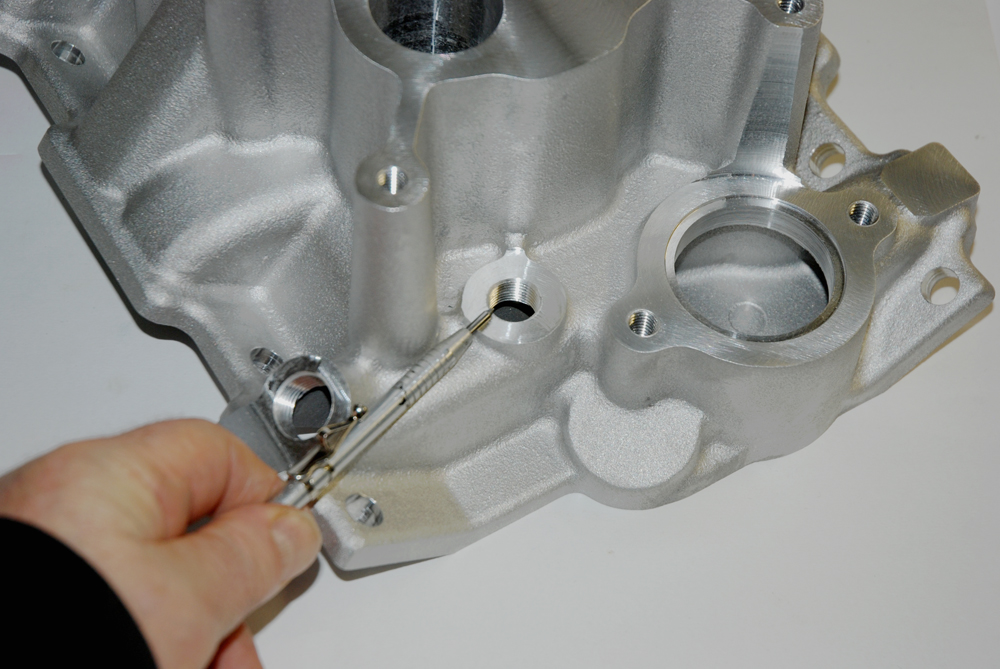

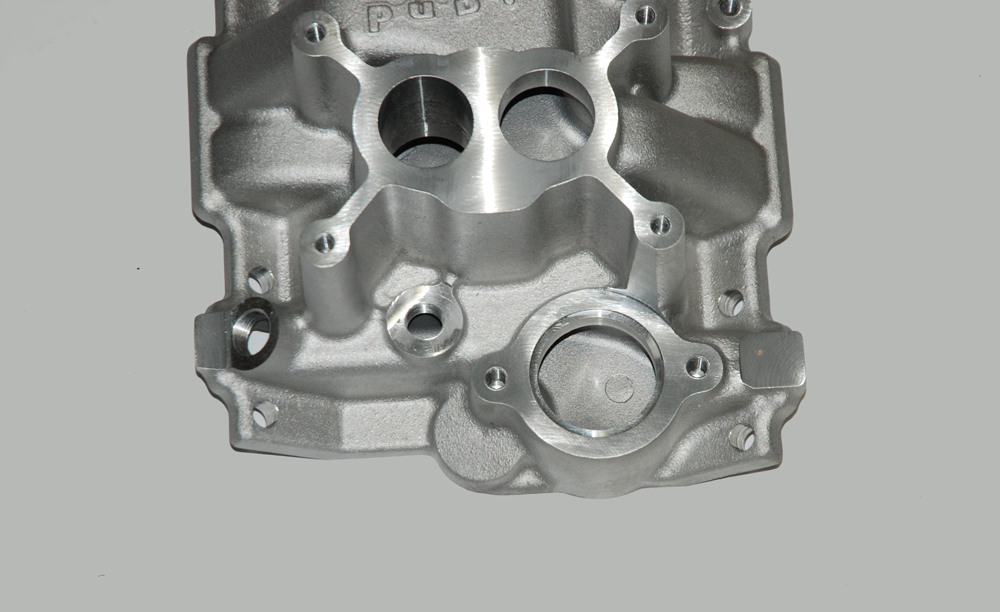
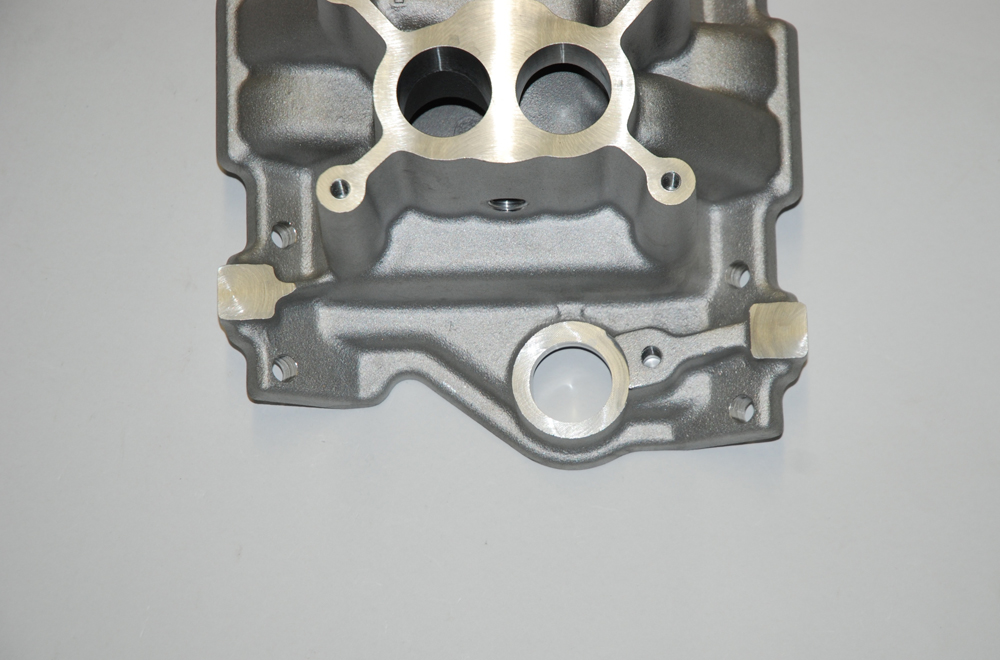
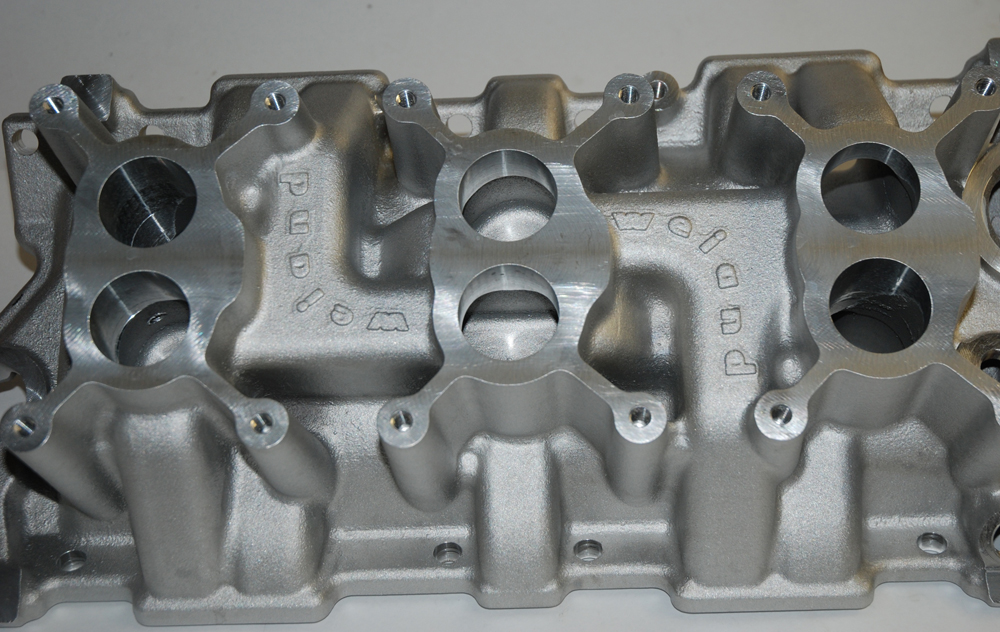




Is anyone making a 3-2 bbl. setup for a BBC? I have a 454 BBC in a ’57 Chevy that could use it.
I had a ’67 Camaro with a 327 back in high school in the late 70’s that I installed an Offenhauser tri-power manifold onto. It used the Rochester 2GC carbs instead of the Holleys on this piece. It looked cool with the hood open at the local hangout spot, but was a little more than I at 17 years old was able to tune properly. This new setup should sell very well and performance should be good too.